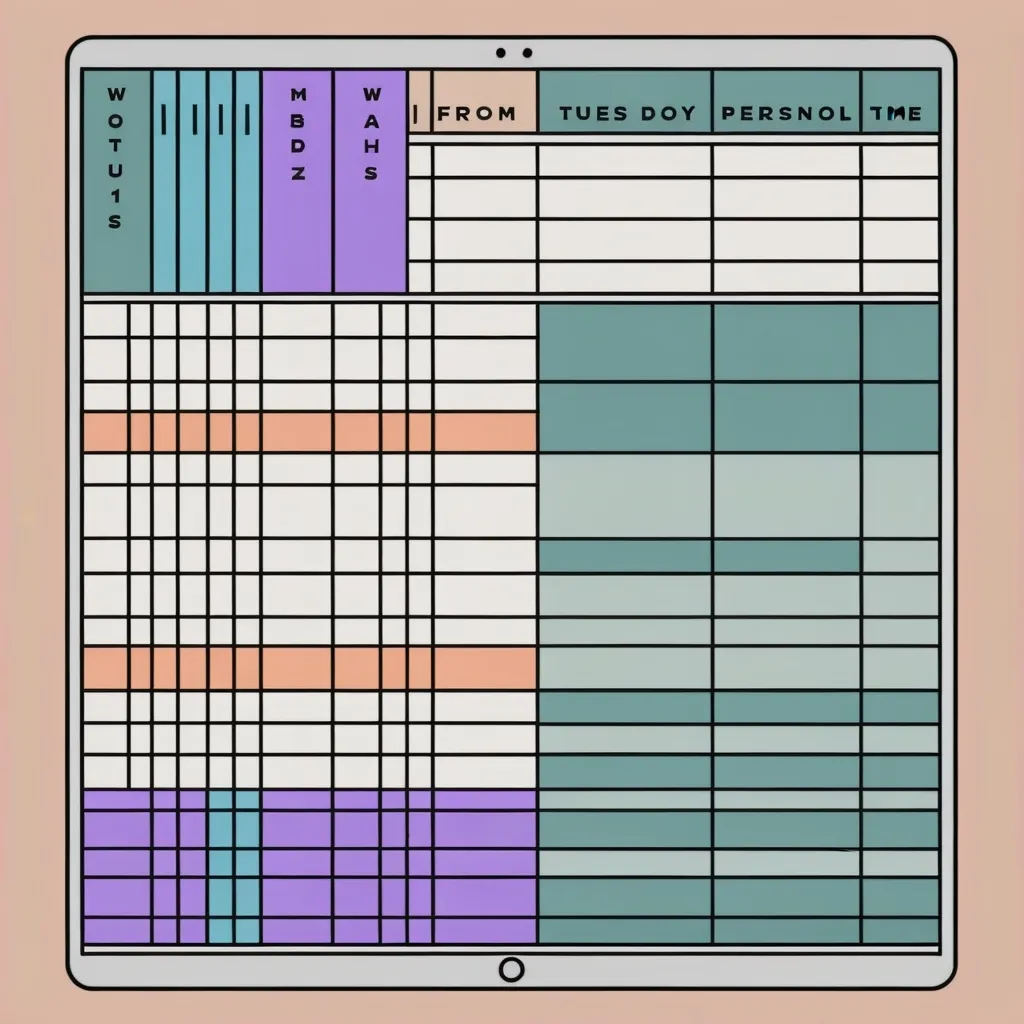Multitasking: The Productivity Myth Busted
We’ve all been there - juggling multiple tasks, feeling like a superhero of efficiency. But what if I told you that this superpower might actually be your kryptonite? Yep, you heard that right. The multitasking magic we’ve been sold on for years might just be a clever illusion.
Let’s dive into the world of multitasking and uncover why it might be time to switch gears. Trust me, by the end of this, you’ll be looking at your to-do list in a whole new light.
The Multitasking Mirage
Picture this: You’re cooking dinner, helping the kids with homework, and trying to finish that work presentation - all at the same time. Feels productive, right? Well, here’s the kicker - you’re not actually doing all these things simultaneously. What you’re really doing is task-switching, and it’s not as efficient as you might think.
Every time you switch from one task to another, your brain needs a moment to adjust. It’s like changing lanes on a busy highway - there’s always that split second where you’re between lanes, not fully committed to either. In productivity terms, we call this the “switching cost.” And let me tell you, these costs add up faster than your coffee bill at the local cafe.
The Real Cost of Juggling
Think about it - when you’re constantly bouncing between tasks, you’re never really giving your full attention to any of them. It’s like trying to watch three TV shows at once by rapidly changing channels. Sure, you might catch bits and pieces, but you’re missing out on the full experience of each show.
In the workplace, this translates to more errors, longer completion times, and a general feeling of being frazzled. Not exactly the recipe for success, is it?
The Sequential Tasking Solution
So, what’s the alternative? Enter sequential tasking, or as I like to call it, “one thing at a time” magic. It’s pretty much what it sounds like - focusing on one task, completing it (or reaching a good stopping point), and then moving on to the next.
I know, I know. It sounds almost too simple to be effective. But trust me, it’s like discovering that the secret to losing weight is eating less and moving more - sometimes the simplest solutions are the best ones.
Making the Switch: Practical Steps
Alright, so you’re sold on the idea of sequential tasking. But how do you actually make it happen in your day-to-day life? Here are some practical steps to get you started:
-
Weekly Reviews: Take some time at the start of each week to look at what’s on your plate. Write down all your tasks, ideas, and goals in one place. It’s like creating a roadmap for your week.
-
Time Blocking: This is a game-changer. Assign specific blocks of time to different tasks. Maybe mornings are for creative work, afternoons for meetings, and evenings for admin tasks. Stick to it as much as you can.
-
Batch Similar Tasks: Group similar tasks together and tackle them in one go. For example, set aside a specific time to answer all your emails instead of checking them constantly throughout the day.
-
Embrace Technology: Use project management tools and automation to your advantage. Let technology handle the repetitive stuff so you can focus on the important things.
The Personal Touch: My Own Journey
I used to be the poster child for multitasking. I’d have multiple tabs open, be on a call, and try to write an article all at once. I thought I was being super productive. Spoiler alert: I wasn’t.
It wasn’t until I tried focusing on one task at a time that I saw a real difference. When I dedicated uninterrupted time to writing, my articles got better. When I focused solely on client calls, I built stronger relationships. It was like a productivity revolution in my own little world.
Breaking the Multitasking Habit
Now, I get it. Switching to sequential tasking isn’t easy, especially when we’re bombarded with notifications and the constant pressure to be “always on.” But here are a few tricks that helped me:
-
Set Clear Goals: Before you start your day, know what you need to accomplish. It’s like having a shopping list - you’re less likely to get distracted by the shiny objects (or tasks) that aren’t on the list.
-
Minimize Distractions: This might mean turning off notifications, using website blockers, or even finding a quiet space to work. Whatever it takes to keep your focus on the task at hand.
-
Practice Mindfulness: Being more aware of your thoughts and actions can help you catch yourself when you start to stray from your current task.
-
Take Breaks: It might seem counterintuitive, but regular breaks can actually boost your productivity. It’s like interval training for your brain.
The Bigger Picture: Beyond Productivity
Here’s something we often forget - the way we work doesn’t just affect our output, it affects our overall well-being too. Constant task-switching can lead to stress, burnout, and a general feeling of being overwhelmed. On the flip side, focusing on one task at a time can bring a sense of calm and accomplishment.
Moreover, when you’re not splitting your attention between multiple tasks, you have the chance to really dive deep into what you’re doing. This can lead to better learning, more creative solutions, and a greater sense of satisfaction in your work.
Wrapping It Up
So, there you have it. The multitasking myth, busted wide open. It turns out that doing less (at a time) might actually help you achieve more. Who would’ve thought?
Remember, changing the way you work is a process. It might feel strange at first, and you might catch yourself slipping back into old habits. That’s okay. The key is to keep at it, one task at a time.
Next time you find yourself tempted to juggle multiple tasks, take a deep breath and ask yourself: “What’s the one thing I need to focus on right now?” Your future, less-stressed, more-productive self will thank you.
So, are you ready to ditch the multitasking myth and embrace the power of focus? Your productivity journey starts now. One task at a time, one day at a time. You’ve got this!






